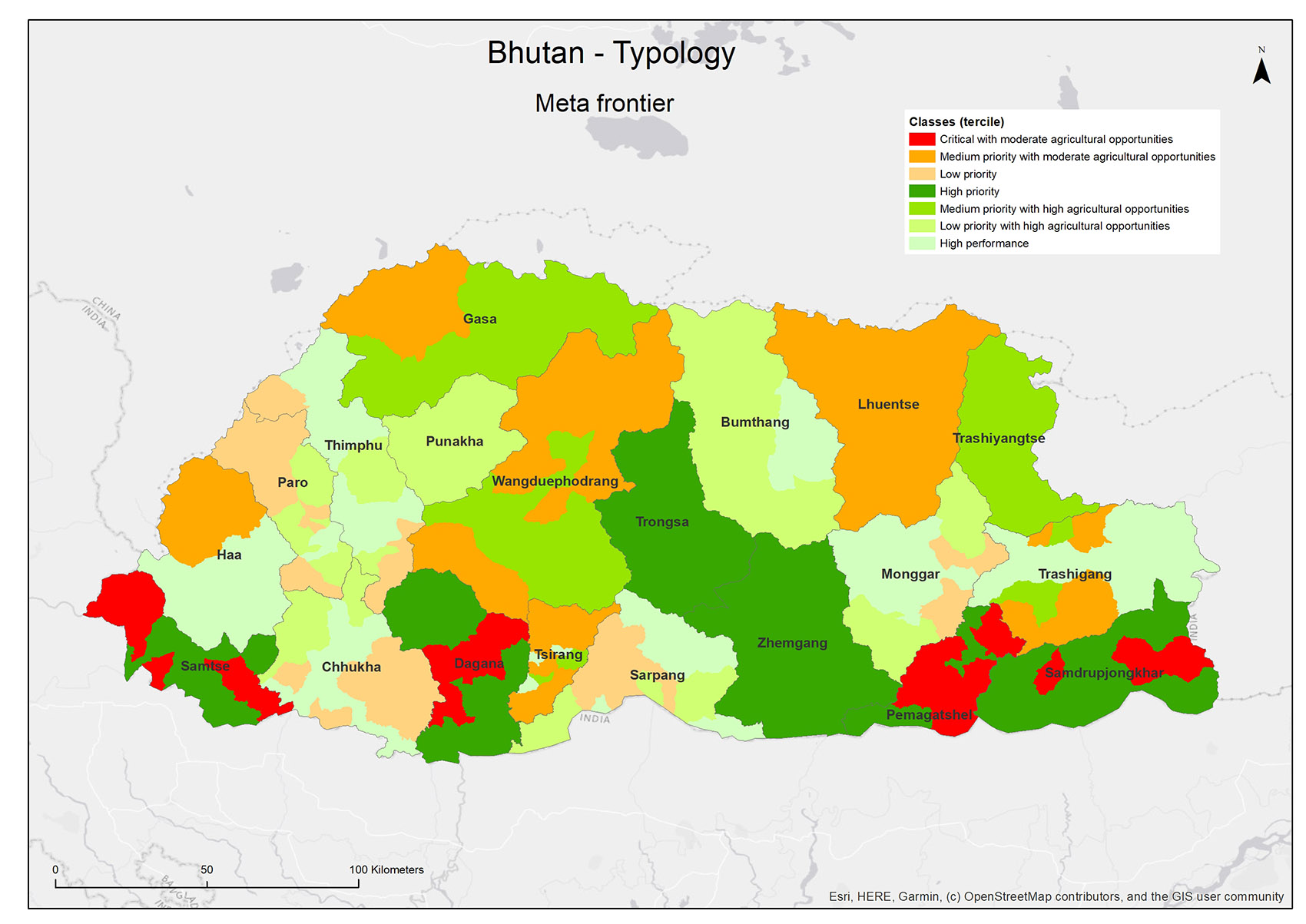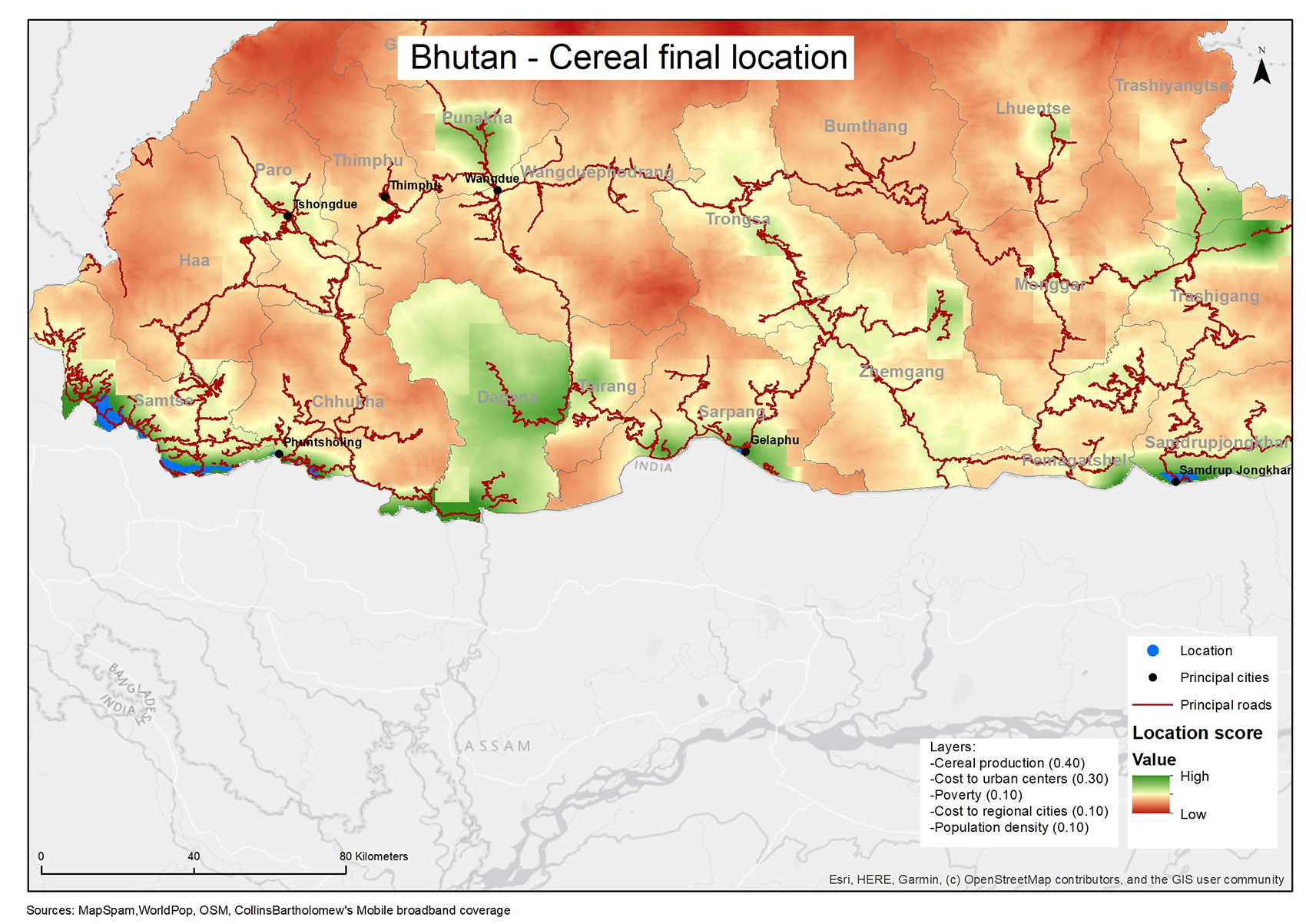Bhutan |
THE PROPOSAL
The Government of Bhutan aims to transform the country's agri-food system so that it goes from deficit to surplus. The strategies to achieve this are improving agricultural practices, producing more fruits, vegetables and cereals to achieve self-sufficiency, cultivating more perennial crops, improving dairy production, and mitigating CO2 emissions from agriculture.
The Hand-in-Hand initiative facilitates investments in six of the 20 districts to enhance agricultural productivity and competitiveness. The Initiative ensures that transparent, innovative and impactful investments are made and prioritizes the country’s special agricultural products, or SAPs, with production advantage.

COMMODITIES AND INTERVENTIONS
Organic strawberry
Currently piloted on a small scale, organic strawberry has shown high potential and comparative advantage due to Bhutan's agro-climatic conditions. The Government is focusing on organic strawberries grown in a vertical farm setting integrating climate-smart-production technologies to target markets in Thailand, Singapore, Malaysia and Bangladesh, as well as domestic niche markets.
The Government plans to introduce 500 greenhouses in Thimphu and Paro Districts, with expectations to increase income, generate employment and attract young people. This would benefit 500 households to start with. Aggregation units will be established in the districts, integrated with cold storage infrastructure to reduce spoilage and achieve high-quality standards.
This effort requires an investment of US$1.93 million over a 10-year period or US$2.83 million over a 20-year period. The target production is 360 metric tons annually. The internal rate of return is expected to be 54%.

COMMODITIES AND INTERVENTIONS
Organic Asparagus
The Government has prioritized the production of organic asparagus as part of an effort to promote high-value, low-volume commodities and integrate climate-smart technologies into agriculture. Investments support planting them in open-field conditions, adopting climate production systems and using organic inputs. Target export markets are Thailand, Singapore, Malaysia and Bangladesh.
This effort includes an expansion of cultivation area to 1,000 acres from the current 180 acres in Thimphu and Paro Districts, with 500 acres under rain-fed cultivation practice and the other 500 under irrigated cultivation practice. This is expected to benefit 2,000 households. There is a plan to improve post-harvest management by establishing aggregation units in each district, integrated with cold storage infrastructure to reduce spoilage and achieve high-quality standards.
An investment of US$2.88 million over a 10-year period (or US$4.84 million over a 20-year period) is required. This will increase production to 700 - 900 metric tons annually, with an internal rate of return of 15% for rain-fed asparagus and 20% for irrigated asparagus.

COMMODITIES AND INTERVENTIONS
Aggregation Centres and Packhouses for Strawberry and Asparagus
Currently, there is a lack of efficient aggregation centre for post-harvest management. However, such advanced facilities are critical for reducing post-harvest food loss and achieving high-quality standards, especially for international markets. The Government has prioritized establishing aggregation centres for post-harvest management for horticulture crops, with an eye toward long-term gain.
Aggregation units will be established in Thimphu and Paro districts for washing, drying, grading, sorting, and packaging horticulture products. These units will be integrated with cold storage infrastructure and refrigerated trucks. Initially, two small facilities with capacity to handle 5 - 10 metric ton of produce daily and cold storage capacity of 25 metric tons, comprising 15 and 10 metric tons compartments.
This initiative requires an initial investment of US$ 750,000 for a 10-year period or US$1.1 million over a 20-year period. The internal rate of return is expected to be 27 - 30%.
Quinoa
In order to address the challenges of post-harvest management and marketing, the Government plans to engage the private sector to improve the operations of crop processing facilities. Processing centres are critical not only to reduce post-harvest food losses, but also to process and maintain standards and quality required in the export and domestic markets.
Advanced processing equipment will be added to existing facilities with daily capacity of 4 metric tons. And they will be linked more closely with producers and to markets. Additional processing facilities with daily capacity of 8 metric tons will be built in strategic locations and be accessible to farmers in the eastern region, where quinoa is being produced in large quantities.
The upgrading and establishment of processing centres requires an investment of US$1.08 over a 10-year period or US$1.72 million over a 20-year period. Combined, these facilities are expected to increase quinoa processing capacity from 4 tons to 12 tons daily, with an estimated internal rate of return of 43 - 45%.

Black Pepper
Black pepper is considered as a strategic commodity thanks to the suitable agro-climatic conditions. And there is no requirement for additional land as it can be grown along with areca nut. Investments will focus on linking producers to private aggregators and traders for exporting to India.
An investment of US$4.25 million over 10 years could increase production to 4,320 metric tons annually. The internal rate of return is expected at 33%.

